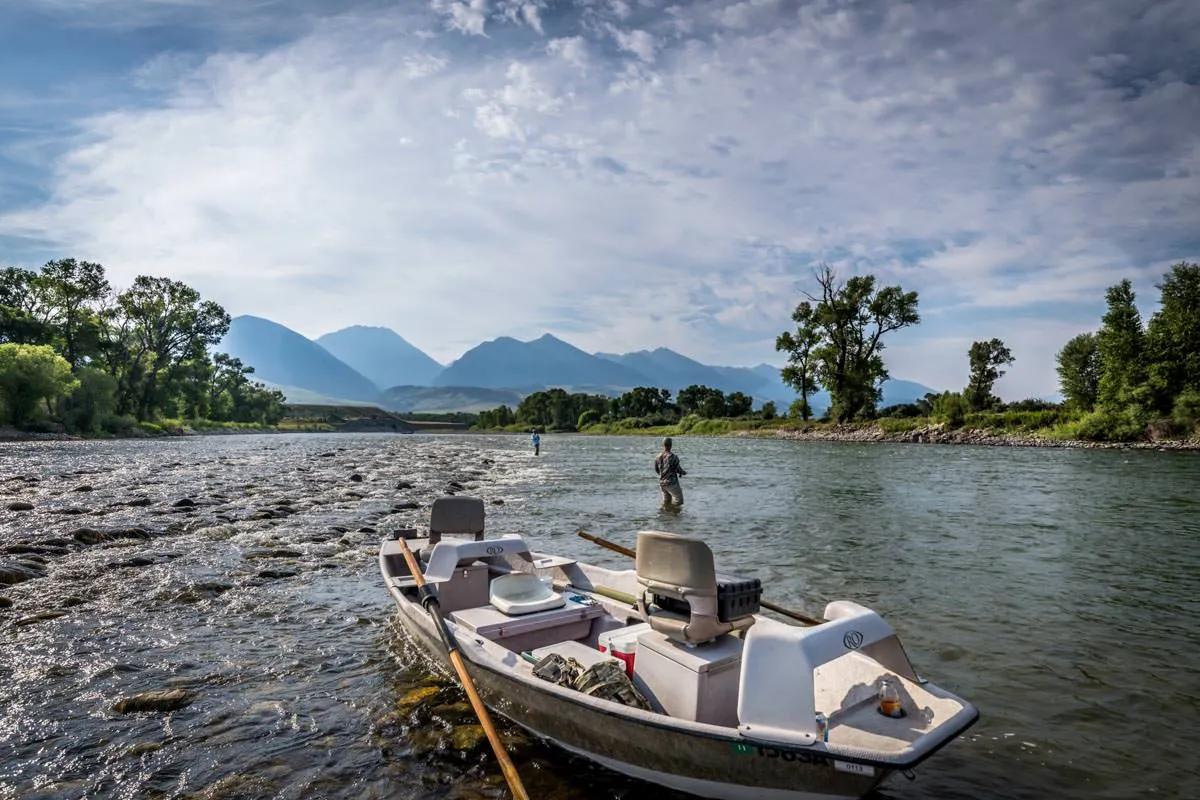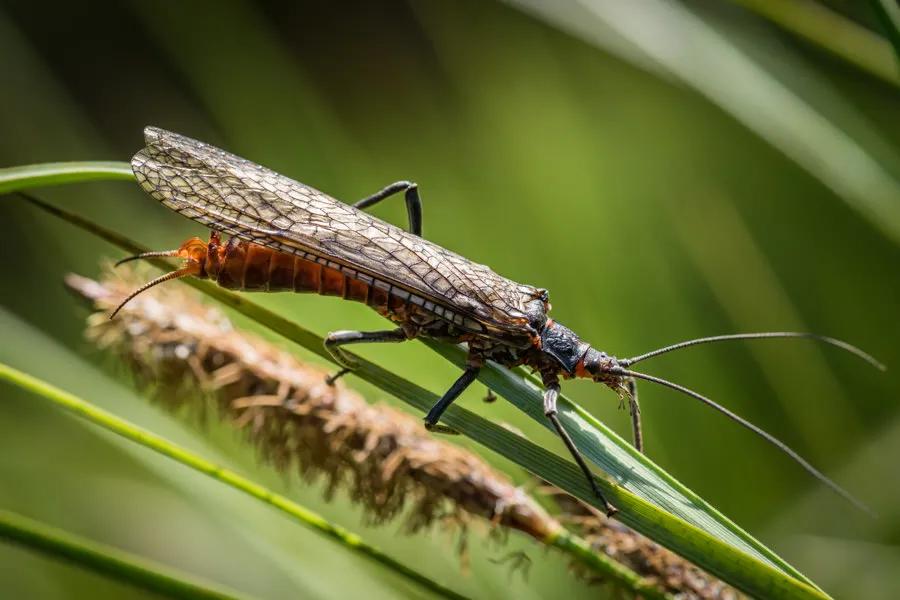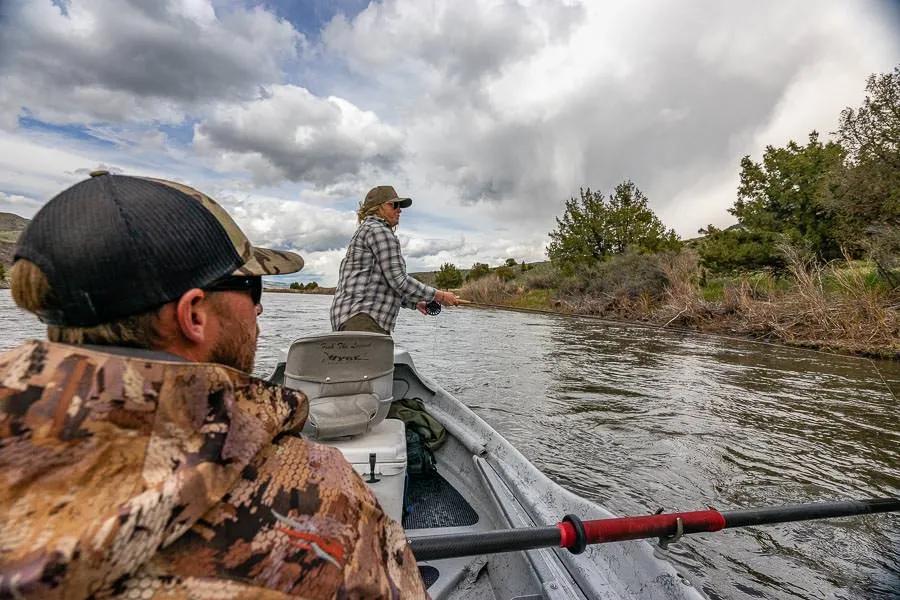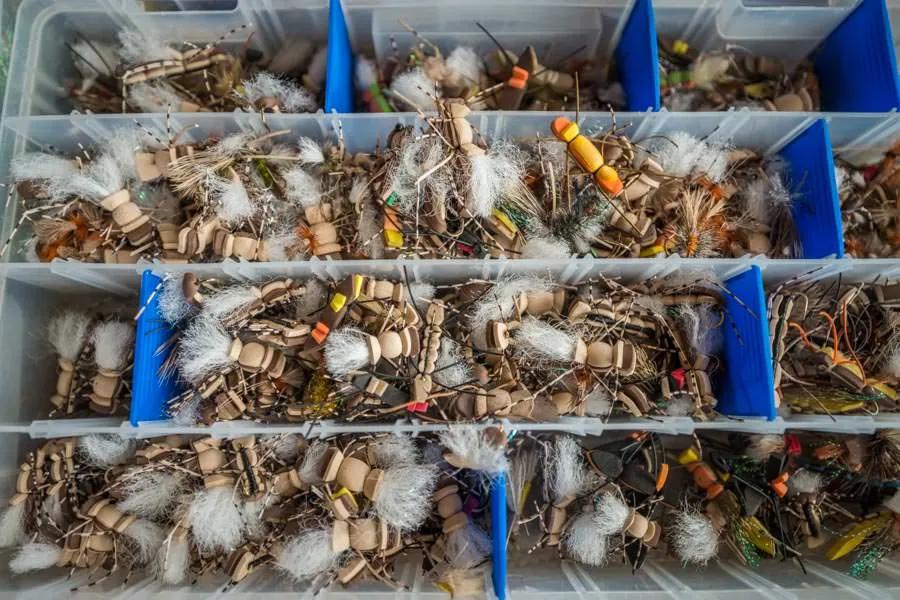
The Yellowstone River flows for over 700 miles from its headwaters deep in the heart of Yellowstone National Park to its confluence with the Missouri River. For its entire course the Yellowstone River flows undammed and wild. With the longest snowmelt runoff of any river in Montana, when the Yellowstone River comes into shape after nearly a month of being unfishable due to high and muddy streamflows, there is cause for much rejoicing amongst local anglers and traveling anglers. Because the Yellowstone River is undammed and has a long period of high water, most years see new channels being created or the altering of existing ones. Typically runoff begins in mid-May and lasts deep into June and anglers often do not begin to fish the river again in earnest until early July. With such a long period of the river being too high and muddy to fish, there is often a "re-learning" of the river and its fishing in early July of every year. Here are 5 Tips for Fishing the Yellowstone River in Early July.

Match the Hatches
Yellowstone River trout in July feed almost exclusively on aquatic insects in early July. Beginning at the end of snowmelt runoff the largest flies of the season hatch--the salmonflies. These massive insects begin their hatch by migrating to bankside structure like rocks, trees, and any thing they can cling to. Once at the edges of the river, salmonfly nymphs crawl out of the water to begin hatching. After a short timespan they morph from a nymph--much like a caterpillar--into a flying insect. On the Yellowstone River at the tail end of runoff trout actively seek these large insects in both the nymphal stage and the flying adult stage. These salmonflies are often the largest meal of the year for trout so it is not uncommon to find some of the river's largest trout actively seeking-out an destroying 3-4 inch long dry flies.
After salmonflies hatch, golden stoneflies hatch in abundance as well. Although not as large as their salmonfly cousins, a golden stonefly hatch is a regular occurrence on the Yellowstone in early July. Similar to salmonflies, golden stonefly nymphs migrate to the bank and then crawl on structure to hatch. Anglers can continue to fish large dry flies after the salmonfly hatch by using golden stoneflies.
Rounding out the primary hatches on the Yellowstone in early July are caddis and Pale Morning Duns. For the first two weeks of July, caddis and PMDs often take a backseat to the larger salmonflies and stoneflies. Because of the Yellowstone's freestone nature, streamflows gradually drop as the month of July progresses, and as streamflows drop, caddis and PMDs hatches become more important to anglers. For anglers still wanting to chase salmonflies these large insects can be found well into late July in Yellowstone National Park.

Focus on the Banks
The key to success on the Yellowstone River in early July is to find where the trout are holding and feeding. Because most of the available food in July is near the banks, that is where the trout will be holding and hopefully feeding. During early July with the increased streamflows the trout are also naturally pushed to the banks rather than holding in deep riffles or longer runs because it is not where the bulk of the food is located. Float fishing the Yellowstone River in early July is the ideal way to fish this large freestone. By using the boat as a tool anglers are able to better cast their flies into the hundreds of fishy looking spots. The Yellowstone River is home to native Yellowstone cutthroat trout, brown and rainbow trout, as well as mountain whitefish. When targeting trout on the fly on the Yellowstone, focus on the slightly slower water near bankside structure. Trout will hold in pockets or seams created by bankside structure while mountain whitefish will be found in the faster currents. Trout and whitefish may be found at varying depths as they seek out the most available food source.
When hatches of salmonflies and golden stoneflies are thick on the Yellowstone River look for sections that have a preponderance of riverside willows. Willows provide great structure that allow salmonflies and golden stoneflies to crawl on and cling to as they look to find a mate. Additionally, when targeting banks on the Yellowstone River focus on banks that are not flowing so fast or so high that the water doesn't have any slower pockets or seams. Willows often create enough small micro currents in which trout can hold and feed. However, banks with a lot of downed trees or where the main current pushes hard and fast against the bank may be too fast to fish.
Go Shorter and Stouter
Because fishing the banks will be the primary focus on the Yellowstone River in early July and streamflows are fast and full, accurate casts and short drifts are important. This "fast and furious" type of fishing is a big appeal for fishing the Yellowstone River. Floating along the river as the peaks of Paradise Valley fill the foreground and casting to enticing trout lie after enticing trout lie is an exciting way to spend a day of fishing. To ensure success and keep from losing flies to bankside structure, making some tackle adjustments is key. First, fish a shorter leader than what you might normally fish on a river during summer. The shorter leader allows you to cast your flies quickly and accurately into the pockets and seams. Next, increase the size of your tippet section to nothing weaker than 2X. A good starting point is a 5 - 7 1/2 foot 1X or 0X leader. The "running and gunning" approach that is common on the Yellowstone River in early July is much easier and effective with a shorter leader and stronger tippet. Shorter leaders give you more control and a stronger tippet is less likely to leave your flies stuck in bankside willows and logs.

Big Flies Rule the Roost
Early July on the Yellowstone River is perhaps the best time of the year to catch some of the river's largest trout. With high streamflows and the river still carrying sediment causing some turbidity, big trout are a little less wary than they are in the lower flows of late summer and fall. The turbidity and volume of water flowing means trout need big morsels of food. This follows the mantra of many local guides that big flies catch big fish. This is certainly the case on the Yellowstone River in early July. Catching big trout is a lot fun, but even when it is prime big fish hunting time on the Yellowstone, a big trout still needs to be earned...and the first step to landing a big trout on the Yellowstone in early July is to choose the right big fly. Some flies you should always have in your box when fishing the Yellowstone River in early July are Clouser minnows, Sculpzillas, Pat's Rubberlegs, and Chubby Chernobyls.
Learn a reach cast
Cut to the scene: Your Montana fly fishing guide holds the boat in the right spot, pulling hard on the oars against the strong currents of the Yellowstone River. As the bank flows by you continue to cast and mend, cast and mend. Your drifts are short and you catch some fish, but it just feels like you're missing out some of the bigger trout in the Yellowstone River. Your guide asks if you know a reach cast. Your guide then explains that a reach cast allows you to place a mend in the fly line while the line is in the air before it lands on the surface of the water. A reach cast is essential for obtaining a long, drag-free presentation of the fly. The best way to perform a reach cast is by having an extended follow through, bringing the fly rod across your body after a stop is made on the forward cast. This follow through allows for a mend to be placed in the fly line before it lands on the water.
Finding trout on the Yellowstone River in July is a matter of fishing the appropriate hatch, adjusting your tackle and flies, and learning a few extra skills. Early in July, especially when the river is still running high, stoneflies dominate the hatch chart. Because most stoneflies hatch from bankside structure and streamflows are fast and high in early July, most trout will be found near the bank. As streamflows lower, trout will follow the hatching insects to their respective feeding lie. Because the Yellowstone River is one of the largest trout rivers in Montana and has high and fast streamflows in the first two weeks of July, bankside structure riffle corners, and slower water in back eddies will hold most trout.
Fishing the Yellowstone River in early July is one of the best times of the year. As the longest undammed river in the lower 48, the Yellowstone River boasts nearly 150 miles of trout-friendly water. From Gardiner and the Yellowstone National Park boundary downstream to just east of Columbus, the Yellowstone River flows through varied topography—feeling at times like a mountain freestone with large rapids and pocket water to a meandering prairie river with long riffles and runs framed with banks of tall cottonwoods. Throughout these 150 miles the river has various sections with distinctly unique characteristics. It feels like several rivers all in one and a fly fishing trip on the Yellowstone River in early July is sure to be a special experience.
